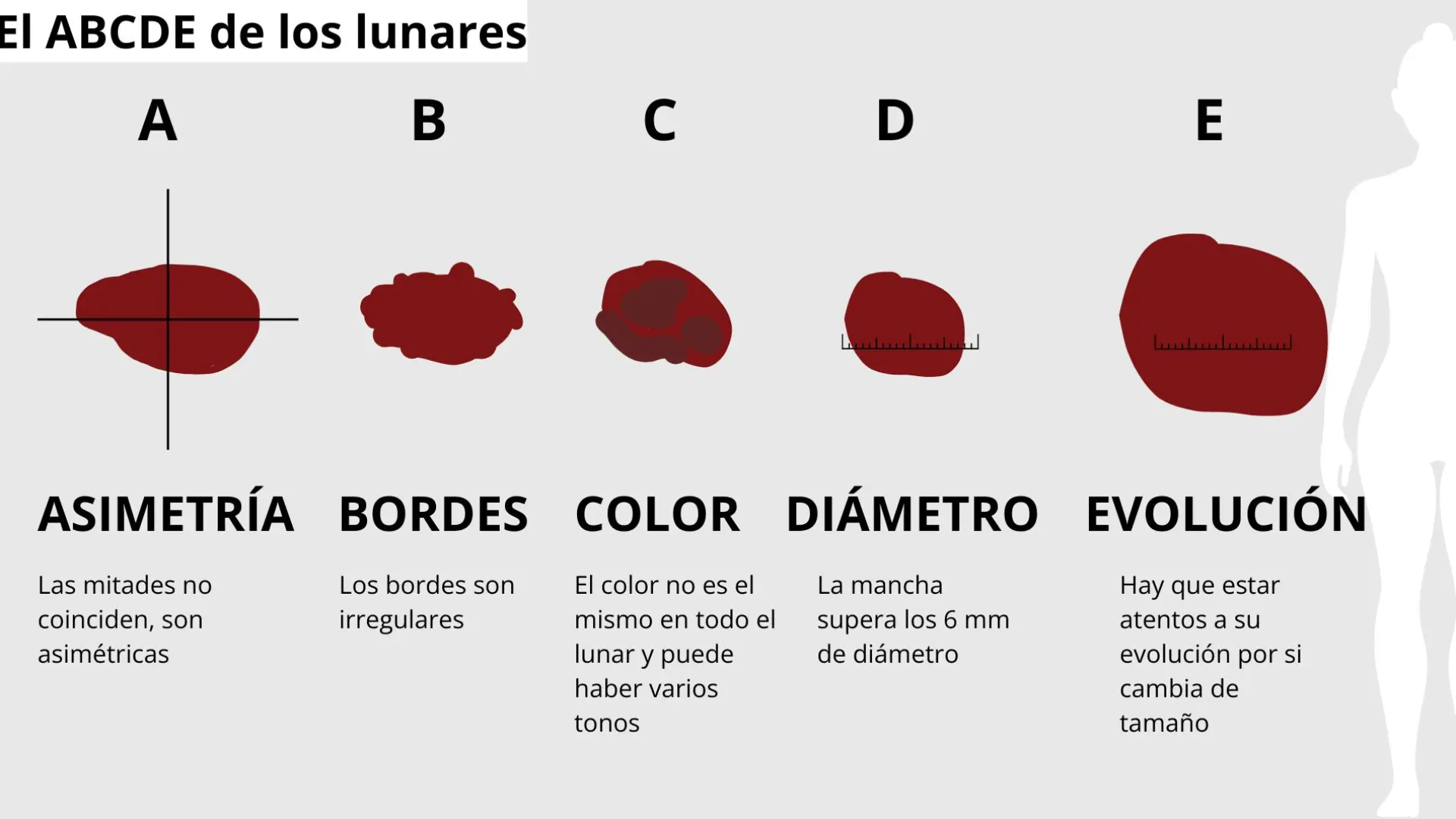This mole you have, dear… could be cancer: learn to distinguish it

In the popular imagination, polka dots have become an erotic element, as evidenced by the very famous Mexican song Quirino Mendoza y Cortez. Today everything has changed. A mole should be a reason to seek medical help, because sometimes it can lead to cancer.
Faced with the popular idea that a mole can’t kill you, that it’s no big deal and that there are much more serious types of cancer, reality becomes undeniable. In fact, the incidence of skin melanoma in Spain is on the rise, and over the past year it has increased from 12.0 to 15.1 cases in women and from 12.0 to 15.4 cases in men, as reflected in the infographic “Skin melanoma in Spain.” prepared by the Spanish Network of Cancer Registries (Redecan) and the Spanish Society of Medical Oncology (SEOM).
And based on these data, experts insist on prevention and the importance of early diagnosis, sincealthough moles may have a genetic origin, It is extremely important to take certain measures to minimize their occurrence or change existing ones.
And in case of prevention, knowledge of the “mole alphabet” can save lives. “ABCDE is a rule that should be followed to determine whether changes in moles or spots on the skin are questionable. regarding the possible malignancy of the formation. A – asymmetry (the more asymmetry, the greater the likelihood), B – edges (irregular or blurred indicate greater suspicion), C – color (discoloration or different colors in the same mole may indicate malignancy), D – diameter (more than 6 mm or a sudden increase in diameter indicates the need for more careful monitoring); and “bonus track” E for evolution: any sudden change in size, color, ulceration, bleeding… This also gives us room for suspicion,” explains specialist Elena Delso.
In this sense, Dr. Delso, who has operated on numerous facial skin lesions, insists that “This does not always indicate whether the lesion is benign or malignant. “We just have to be extremely vigilant in these cases and consult with a specialist.”
Prevent so you don’t have to regret
Along with surveillance, prevention plays a crucial role, whether we have risk factors or not. First of all, it is important to avoid excessive sun exposure, especially from 10:00 to 16:00, the hours of greatest radiation. “Secondly, and very importantly, we must use a broad-spectrum photoprotector effective against UVA and UVB radiation, blue light and, if possible, include antioxidants in its formula as they provide additional protection. Finally, it is very important to cover skin exposed to the sun with hats and sunglasses,” recalls Miguel Montero, member of the dermopharmacy department of the Official College of Pharmacists of Zaragoza.
It is extremely important to avoid excessive sun exposure, especially between 10:00 and 16:00, the hours of greatest radiation.
In addition, it should be insisted that even if the mole is not exposed to direct sunlight, Be sure to apply sunscreen daily. The effects of UV radiation are cumulative, meaning the damage accumulates over time. Additionally, they can influence skin health at a systemic level. “This means that the harmful effects of solar radiation are not limited to sunburned areas of the skin. or burn it. Even if the mole is not directly exposed to the sun, radiation can affect your entire skin, including the areas where the moles are located,” explains Montero.
Explore your skin
Prevention also includes regular self-examination of the skin (using magnifying glasses, mirrors, and even a cell phone camera to document evolution) to identify new moles or changes in existing ones, as well as regular visits to a dermatologist. “The ideal would be to make at least one visit a year so that a professional can analyze the moles more thoroughly,” recalls a member of the Dermopharmacy of the College of Pharmacists of Zaragoza, an organization that, in collaboration with the Spanish Association Against Cancer, launched the campaignto “It’s up to you, #Noterayes” aims to raise awareness of the dangerous link between fake tanning and skin cancer.
“The ideal would be to have at least one visit a year so that the moles can be analyzed more thoroughly by a professional.”
The initiative, supported by the World Health Organization, which classifies tanning beds as one of the highest carcinogenic risks, has involved 500 pharmacies in the province of Zaragoza to disseminate information.
In addition, this promotion is added to the already consolidated annual campaign. “Sun without risk” which they organize together with the Spanish Association against Cancer every summer in the municipal swimming pools of Zaragoza and its province. “Through a practical decalogue, We provide everything you need to safely enjoy the sun and without putting your health at risk,” he explains.
Why do moles change?
There are cases when, over time, moles can change their appearance and become malignant. And this is due to a number of factors, including genetics, as there are people who have a greater predisposition due to heredity, so if you have a family history, it is important to keep an eye on your moles.
“They can also change due to damage to cells or DNA. Melanocytes, which are the cells that produce skin pigment, can be damaged by factors such as ultraviolet rays, sun or exposure to tanning beds,” explains doctor Elena Delso. recalls that “in adulthood “Accumulation of sunlight and environmental damage can also lead to malignant degeneration of the mole.”
Last but not least, we must not forget about hormonal factors, since during certain periods of life (puberty, pregnancy…) moles can change shape and lead to changes or confusion.
For all these reasons, prevention and surveillance are important, and “any change that occurs in a mole should be examined by a dermatologist.” concludes Dr. Delso.
